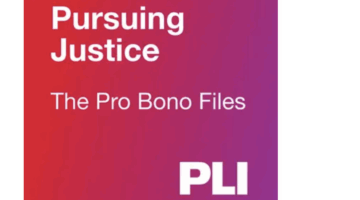 The U.S. economy has been steadily improving for the past several years. Although it’s hardly had a rocket strapped to its back, key economic indicators have been creeping upward steadily since the nadir of the Great Recession. Stock markets have climbed to record altitudes, the unemployment rate is at 4.2%, and consumer confidence is high. By all accounts, the U.S. economic engine is building up steam.
The U.S. economy has been steadily improving for the past several years. Although it’s hardly had a rocket strapped to its back, key economic indicators have been creeping upward steadily since the nadir of the Great Recession. Stock markets have climbed to record altitudes, the unemployment rate is at 4.2%, and consumer confidence is high. By all accounts, the U.S. economic engine is building up steam.
But the picture isn’t so pretty for Biglaw.
Recent reporting by the American Lawyer examined the 2016 financial performance of the Am Law 200, representing the largest law firms in the country. It found a stagnant scene. The top 50 name-brand firms have had anemic growth, and firms ranked from 51-100 actually saw a 1.3% decline in revenue, along with a profit-per-partner decline of 1.7% and profit-per-lawyer decline of 3.3%. Firms ranked from 101-200 have even bigger challenges, turning into the “hollow middle” of the legal market.

Chrometa: Turning Time Into Billable Value For Modern Lawyers
Adoption of Chrometa represents more than a technological upgrade; it reflects a professional philosophy that values accuracy, transparency, and efficiency.
So why is this happening? It’s complicated. But distilled to the core, it’s the inevitable result of years of complacency. Much of the legal market is based on the same billable-hours revenue model that’s defined the practice of law for a century, and on the same partner-supported-by-a-raft-of-associates organizational structure that it seems has existed as long as the concept of large law firms.
Although the world has morphed since the bottom fell out in 2008, Biglaw has not. Legal-solutions providers that have been ready to adapt and seize control of the changing market are drinking the traditional firms’ milkshake. Niche firms that have figured out how to commoditize practices like labor and employment with low flat rates are sucking work from white-shoe firms like a Roomba. Alternative legal services companies like Axiom Law are carving out pieces of the traditional legal market space for themselves, and even technology-based platforms like LegalZoom are gobbling up market share from the incubator-based startup world. On the other end of the spectrum, the largest clients with the most leverage have either slashed what they’re willing to pay or taken the work entirely in-house. Just being a great lawyer is no longer a guarantee of a successful practice, or even a steady job.
The good ol’ days are gone, and they’re not coming back.
So what’s a Biglaw lawyer to do? For all the doom and gloom, there’s a roadmap that exists that offers large-firm attorneys a glimmer of hope. But it exists in the unlikeliest of places – in the dark recesses of a world where most firm lawyers have never thought to look: the plaintiffs’ bar. Yes, you read that right.

Pursuing The Pro Bono Story: A Conversation With Alicia Aiken
This Pro Bono Week, get inspired to give back with PLI’s Pursuing Justice: The Pro Bono Files, a one-of-a-kind podcast hosted by Alicia Aiken.
The lawyers with Biglaw’s answers aren’t any old “dirty shirt” plaintiffs’ lawyers; they live in a little-known subset of the bar my colleagues and I affectionately call the “pro-business plaintiffs’ bar.” Why pro-business? Because members of this informal bar are not only willing to represent business entities and owners as plaintiffs in contingent-fee cases, but also because they treat their practices as a business – a concept that countless firms have given lip service to but few actually employ.
The pro-business plaintiffs’ bar follows two guiding principles a modern firm needs to survive: innovation and discipline. As a lawyer who helps manage an exclusively contingent-fee practice in the halls of a 160+-lawyer, 130-year-old law firm, I’ve seen first hand the power of this bar, what it stands for, and the ideas it can generate.
When you’re on a contingent fee, with no guarantee anyone is going to pay your bill at the end of the day, you have to innovate. Even outside of the headline-grabbing trial technology world, more prosaic, less-sexy tech allows members of this bar to automate large swaths of the practice, eliminating time sinks and freeing up time to work on productive tasks. The bar is also at the forefront of innovative staffing solutions to ensure work is done by the people best suited for it — not just reflexively defaulting to sending work to junior associates solely because that’s how it was traditionally done. The pro-business plaintiffs’ bar is always hustling, always thinking, always getting better for one simple reason: their livelihoods depend on it.
In contrast to the pro-business plaintiffs’ bar, Biglaw is a graveyard for innovation. The law firm industry churns out lawyers who are insulated in bubble wrap from the business side of the profession. Business discipline takes a back seat to grinding hours. All too often, lawyers able to generate cash by putting their heads down miss out on learning about law firm economics. With many if not most lawyers going to law school to avoid dealing with entrepreneurial risk and balance sheets, Biglaw was a match made in heaven. But as the American Lawyer research above shows, that fairytale story has turned into a bad episode of “The Bachelor: After the Final Rose.”
A contingent fee-based practice also naturally instills a strong sense of discipline. This discipline starts with a relentless and regimented approach to business generation. When your lifeline isn’t the increasingly elusive institutional client that sends all of its work to your firm, there’s a sense of urgency to client development; every business interaction, every community event, every relationship turns into a rainmaking opportunity. Lawyers in well-run pro-business plaintiffs’ practices also scrupulously monitor every cent of case costs and time expended on a matter. Members of this bar have a powerful incentive to use time and resources wisely—exactly how hourly-paying clients want their attorneys to think.
The traditional law firm model incentivizes against this kind of discipline. Attorneys billing hourly rates may want to spend more time solving their clients’ problems, not less. Good firms, like the large firm I’m proud to be a part of, work hard to keep hours and costs low to best serve clients. But there’s truly nothing like make-it-or-break-it accountability to teach you how to figure out what resources and time a case truly needs to get its best possible result.
Let’s be honest: The Social Network had it right. A rapidly shrinking group of lawyers taking million-dollar-per-year profits isn’t cool. You know what is? A billion dollars. By unshackling itself from a more-hours-means-more-money business model, a firm can grow its income by orders of magnitude with well-chosen, well-executed alternative-fee matters.
Case in point: earlier this year Above The Law reported on the firm Kellogg Huber, which had recently made litigator David Frederick a named partner. Frederick’s contingency fee-based practice had brought in over half a billion dollars to the firm from a string of related cases, presumably off only a fraction of a fraction of that in resources expended. No matter how much you sacrifice your family, friends, and sanity, your $1,000/hour billing rate is never going to get you or your firm half a billion dollars and your name on the building.
So Biglaw friends, don’t despair. If you’re tired of watching your firm tread water and bleed clients, if you’re tired of collecting modest paychecks while waiting for the ax to fall, maybe it’s time to roll up your sleeves, get a bit gnarly, and start thinking like a pro-business plaintiffs’ lawyer.
Maybe it’s time to save Biglaw.

James Goodnow
James Goodnow is an attorney, commentator and Above the Law columnist. He is a graduate of Harvard Law School and the co-author of Motivating Millennials, which hit number one on Amazon in the business management and legal communications categories. You can connect with James on Twitter (@JamesGoodnow) or by email at [email protected].